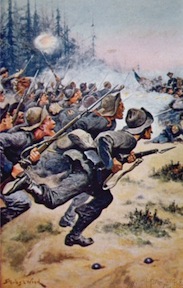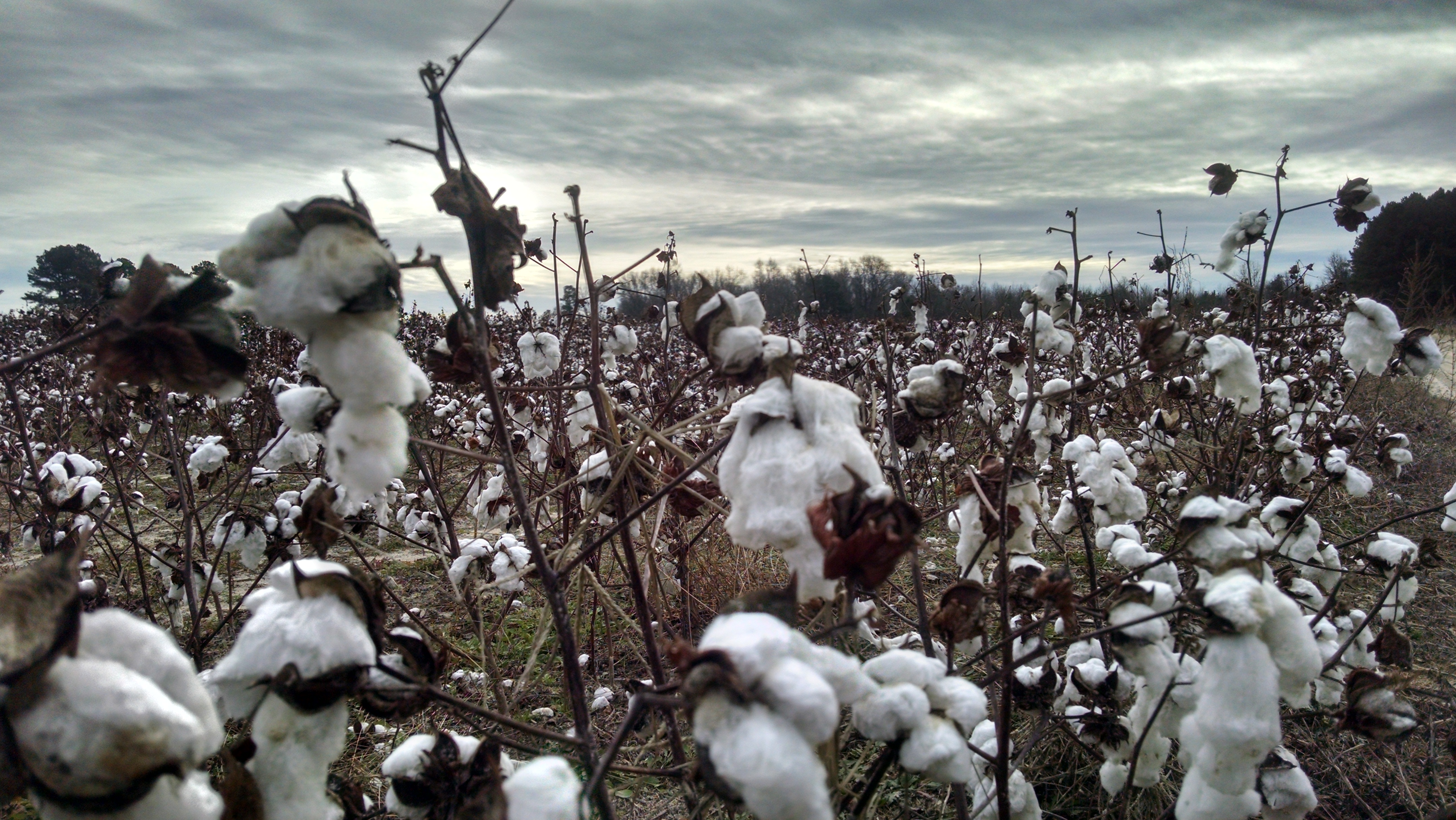The Last Charge of the Army of Tennessee
 As the line of gaunt and scared Confederate veterans emerged from the piney forest and advanced over the cool, sandy soil, the scene inspired nearby onlookers. The Army of Tennessee was moving forward that afternoon for an assault once more. However, the army was now just a shadow of its former self, a distant echo. Gone were many of its notable men and leaders: gone was Patrick Cleburne, dead nearly four months; gone was Sam Watkins; gone were countless others.
As the line of gaunt and scared Confederate veterans emerged from the piney forest and advanced over the cool, sandy soil, the scene inspired nearby onlookers. The Army of Tennessee was moving forward that afternoon for an assault once more. However, the army was now just a shadow of its former self, a distant echo. Gone were many of its notable men and leaders: gone was Patrick Cleburne, dead nearly four months; gone was Sam Watkins; gone were countless others.
This would be the final battle of this once-vaunted army; this March day would witness the final charge of the Army of Tennessee.
A portion of what remained of the Army of Tennessee was sent from north Mississippi in the early part of 1865, returning to a force being gathered by their former commander, Joseph E. Johnston, in North Carolina. The troops made their way there in various ways, and by March, formed a portion of a newly created Army of the South.
The veterans from the war in the West would make up what was essentially a Corps in this formation, under the command of Lt. Gen. A. P. Stewart. They joined the forces of the Department of North Carolina; the Department of South Carolina, Georgia, and Florida; and some units from the Army of Northern Virginia—all under the command of old familiar faces, Braxton Bragg and William J. Hardee, respectively. Another old face returned, as well, to command one of the army’s Corps: Gen. Daniel Harvey Hill, who had briefly commanded a corps in the army during the Chickamauga Campaign.
Johnston had a rare moment of aggression as Sherman’s forces moved toward central North Carolina. Concentrating his forces near the village of Bentonville, Johnston planned to launch a crushing attack on the left wing of Sherman’s Army, under the command of Maj. Gen. Henry W. Slocum. Johnston’s plan was for Bragg’s Department of North Carolina troops to entrench along the route of the Union advance on the Goldsboro Road and then for the Army of Tennessee and Hardee’s Corps to launch an attack on the Union’s left and crush the Federals between the two forces.
On morning of March 19, Slocum’s forces were led by the Army of Tennessee’s old nemesis, the XIV Corps, sporting acorn corps badges in honor of “standing like oaks” against Confederate attacks at Chickamauga.
The fighting began in the morning as the Union advance skirmished with Confederate cavalrymen, who slowly drew them into the trap. By late afternoon, Union troops were formed and sending probes forward to determine the forces in front of them.
This brought down the avalanche of an attack.

As the Army of Tennessee advanced out of the pine trees, the scene was grand, a nearby North Carolinian noted: “It looked like a picture and at our distance was truly beautiful. Several officers led the charge on horseback across an open field in full view, the colors flying and line of battle in such perfect order as to be able to distinguish the several field officers in proper place. . . . But it was a painful sight to see how close their battle flags were together, regiments being scarcely larger than companies and a division not much larger than a regiment should be.”
Howling the Rebel Yell, the Westerners slammed into the stunned Union troops, one of whom later noted, “As far as we could see on both our right and left they were coming in unbroken lines with that old yell we had learned to know so well. We held our position, keeping up a continuous and rapid fire, until we could plainly see their trap closing around us as they enveloped our flanks and subjected them to their fire. It was impossible to maintain our position.”
The attack rolled on, breaking and buckling parts of the Union line. As the sun set, the fighting continued to rage on until a determined Union defense finally halted the Confederate attacks.
About midnight, the Confederates broke off their attacks and fell back to their original positions to entrench. The final charge of the Army of Tennessee had failed but showed that, despite its great losses, it still had plenty of fight left in its shell.
I like that more is described than just the battle.
I wanted to cry reading this